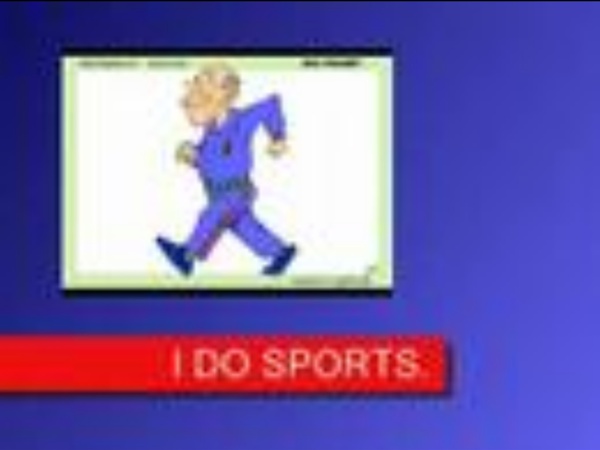



Simple Present Tense:Meaning and Definition with Examples In Simple Present, the action is simply mentioned and there is nothing being said about its completeness. It is used to talk about an action which happens on a regular basis. Notice how we use ‘study’ for the subjects I, You, We, You and They and we use ‘studies’ for the subjects ‘He’ and ‘She’. Simple Present Exercise 1 Simple Present Exercise 2 Simple Present Exercise 3 Notice how we use ‘don’t’ for the subjects I, You, We, You and They and we use ‘doesn’t’ for the subjects ‘He’ and ‘She’. Notice how we use ‘Do’ for the subjects I, You, We, You and They and we use ‘Does’ for the subjects ‘He’ and ‘She’. Simple Present Tense Exercise
Simple Present vs. Present Progressive Exercises and tests Form See also explanations on Simple Present and Present Progressive Use In general or right now? Do you want to express that something happens in general or that something is happening right now? Timetable / Schedule or arrangement? Do you want to express that something is arranged for the near future? Daily routine or just for a limited period of time? Do you want to talk about a daily routine? Certain Verbs The following verbs are usually only used in Simple Present (not in the progressive form). state: be, cost, fit, mean, suitExample: We are on holiday. possession: belong, haveExample: Sam has a cat. senses: feel, hear, see, smell, taste, touchExample: He feels the cold. feelings: hate, hope, like, love, prefer, regret, want, wishExample: Jane loves pizza. brain work: believe, know, think, understandExample: I believe you. Exercies on Simple Present and Present Progressive Tests on Simple Present and Present Progressive
Simple Present [VERB] + s/es in third person Examples: You speak English. Do you speak English? You do not speak English. Complete List of Simple Present Forms USE 1 Repeated Actions Use the Simple Present to express the idea that an action is repeated or usual. I play tennis. USE 2 Facts or Generalizations The Simple Present can also indicate the speaker believes that a fact was true before, is true now, and will be true in the future. Cats like milk. USE 3 Scheduled Events in the Near Future Speakers occasionally use Simple Present to talk about scheduled events in the near future. The train leaves tonight at 6 PM. USE 4 Now (Non-Continuous Verbs) Speakers sometimes use the Simple Present to express the idea that an action is happening or is not happening now. I am here now. The examples below show the placement for grammar adverbs such as: always, only, never, ever, still, just, etc. You only speak English. Once a week, Tom cleans the car. More About Active / Passive Forms
15 fun activities for Present Simple/Present Continuous The best way of teaching the present tenses is to compare and contrast them. These ideas will show you how to do the even more difficult task of combining them in practice activities, all of them done in simple and entertaining ways. There are many well-known and fun activities for the Present Continuous, such as ones involving miming and ones using pictures of crowded street scenes. 1. Give students a list of Present Continuous sentences that they can mime to their partners for them to guess, e.g. 2. Another way of combining Present Continuous mimes with the Present Simple is to ask students to mime actions that they do in their real lives (perhaps choosing from a list with sentences like “You are taking a shower”). 3. Give students a list of words and ask them to choose one and describe it with just sentences using the Present Simple and Preset Continuous. 4. 20 questions 5. 6. 7. 8. 9. 10. 11. 12. 13. 14. 15.
Time - Learn English Basics Learn to talk about time and ask the time in English (requires Real Player). Time (1) When it's "on the hour" we say "o'clock". Time (2) In five minute increments, when it's past the hour (up to 30 minutes past) we say "past". When it's before the hour (after 30 minutes past) we say "to". There are 60 minutes in an hour. 30 minutes is half an hour, we say "half past" or "thirty". 15 minutes is quarter of an hour, we say "quarter past" or "fifteen" or "quarter to" or "forty-five". Prepositions used with time Naturally speaking Digital clocks often show the time this way using the 24-hour-clock, only the police and the military actually speak using the 24 hour clock:- How to ask the time in English. Work time There are some common words and phrases that we use to describe the hours we work. At work in the UK we talk about starting time and leaving time. 9-to-5 is a phrase used to describe a conventional and possibly tedious job. Overtime is the time we work in addition to what is normal.
ESL Present Simple vs. Present Progressive Snakes and Ladders Game ESL Interactive Fun Games Here we have the games carefully laid out for you. Follow the links to browse the variety of games offered. Grammar Games & Interactive Exercises - Click Here! Games for Practising Grammar: Present simple/present progressive games, past tense games, present perfect games, comparative/Superlatives and more... Vocabulary Games & Interactive Exercises - Click Here! Games for practising English vocabulary: Lots of games by topics and game types Pronunciation Games & Interactive Exercises - Click Here! Games to practice English pronunciation, phonetics and phonics. Reading/Spelling Games & Interactive Exercises - Click Here! Games and exercises to practice reading, spelling and lexis
PRESENT SIMPLE TENSE ROUTINES TIME MEANS OF TRANSPORTATION